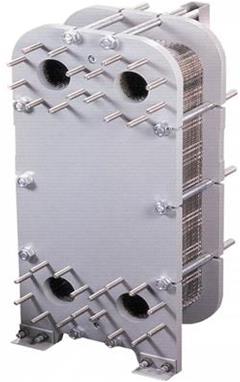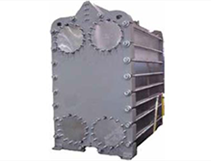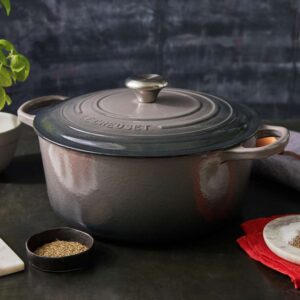Plate and body warmness exchangers are critical additives in a wide range of commercial and business programs because of their performance, compact design, and capacity to transfer warmth efficiently. These exchangers operate by using passing fluids via alternating plates, where warmth is transferred with out direct contact. Their modularity and simplicity of maintenance lead them to relatively desired in systems in which flexibility and scalability are critical. When in comparison to different kinds, the plate and frame heat exchanger stands proud for its overall performance in low to medium strain packages, providing dependable operation in industries like food processing, chemical production, and HVAC. In assessment, air cooled heat exchangers utilize ambient air to cool fluid, making them a pass-to solution in remote or water-scarce environments.

How Plate and Frame Heat Exchangers Work
A plate and body warmth exchanger works on the principle of separating fluids with metallic plates that facilitate thermal trade. These plates are pressed collectively in a frame with gaskets to direct the flow and avoid blending. The association permits for a large surface region within a compact structure, improving warmness transfer charges. As the fluids journey thru their specific channels, warmth is correctly transferred from the hotter to the cooler medium. The design helps easy elimination and cleaning, making it best for hygienic tactics or common protection needs. The synergy among this gadget and air cooled warmness exchangers also can be visible in hybrid installations, in which high-efficiency cooling is paramount.
Benefits of Using Plate and Frame Heat Exchangers
One of the main advantages of using a plate and body warmness exchanger is its superior warmth transfer abilities. Due to its huge floor location and turbulent float, it offers high thermal overall performance in a particularly small footprint. This kind of exchanger additionally allows for easy amendment and scaling, allowing customers to feature or do away with plates based totally on operational desires. Furthermore, cleaning and protection are simplified, reducing downtime and operational expenses. In sectors in which water conservation is important, air cooled heat exchangers are often paired with plate systems to maximise power efficiency and minimize environmental impact.
Applications in Industrial Systems
Plate and frame heat exchangers are extensively used in business structures which includes petrochemical vegetation, refrigeration gadgets, and meals processing facilities. These applications benefit from the excessive efficiency and adaptableness of the layout. For instance, in chemical processing, particular temperature manage is essential for reaction stability, and this exchanger kind meets that requirement efficiently. Similarly, air cooled heat exchangers provide dependable warmth dissipation in out of doors or far off installations where conventional water-based totally cooling isn’t viable. Together, they invent sustainable thermal management systems able to performing in demanding environments.
Comparison with Other Heat Exchanger Types
When as compared with different warmth exchanger types including shell and tube or finned coil systems, plate and body warmness exchangers often outperform in phrases of efficiency, value, and ease of protection. They occupy much less space and are less difficult to easy and expand. Although shell and tube designs are robust and appropriate for excessive-stress eventualities, they frequently require more area and complicated preservation. On the opposite hand, air cooled warmness exchangers shine in which water use is constrained, supplying powerful thermal trade the usage of lovers and ambient air. The choice in the long run depends at the particular necessities of the gadget, consisting of fluid properties, temperature variety, and maintenance protocols.
Design and Configuration Flexibility
One of the standout functions of the plate and body warmth exchanger is its design flexibility. These exchangers may be tailored with exceptional plate substances, thicknesses, and gasket types to fulfill various operational needs. Whether it’s a corrosive chemical method or a hygienic food-grade software, the layout can be customized for most suitable overall performance. The body itself allows smooth access for inspection or plate alternative. Similarly, air cooled warmth exchangers may be configured with varying fan speeds, coil layouts, and airflow directions, allowing for efficient warmness switch in numerous environmental conditions.

Maintenance and Cleaning Simplicity
Maintenance is a key attention in any warmness change machine, and plate and frame warmness exchangers excel in this regard. Their design lets in quick disassembly for cleaning or inspection without requiring specialized gear or extended device downtime. Gaskets can be effortlessly replaced, and fouling can be identified and removed quickly. In packages regarding sticky or viscous fluids, this ease of cleansing interprets to higher device sturdiness. Air cooled warmness exchangers also benefit from truthful upkeep protocols, with handy fan devices and coil surfaces that may be wiped clean often to preserve overall performance.
Energy Efficiency and Environmental Impact
Energy performance is a driving issue in selecting a plate and frame warmness exchanger. These systems minimize thermal loss because of their tight sealing and high floor touch place, taking into account efficient power use. Lower strength intake translates immediately into value savings and decreased environmental effect. Additionally, the use of air cooled heat exchangers eliminates the need for water in cooling techniques, maintaining critical assets and reducing dependency on municipal water resources. This twin technique is mainly useful in sustainability-pushed operations and environmentally touchy places.
Integration with Air Cooled Heat Exchangers
Plate and frame warmness exchangers may be integrated with air cooled warmth exchangers in structures that require multi-level cooling. For example, an commercial facility may also use plate exchangers for initial high-efficiency warmth removal, observed by way of air cooled devices for final discharge temperature manage. This integration offers more suitable reliability, redundancy, and adaptability, in particular in climates in which water-based totally structures are not feasible. It additionally helps modular enlargement, permitting structures to develop with operational call for without predominant overhauls.
Common Materials and Durability
The substances used in plate and body warmth exchangers play a sizable role in overall performance and sturdiness. Stainless metal, titanium, and different corrosion-resistant alloys are usually used to face up to harsh fluids and temperatures. These substances ensure that the exchanger remains long lasting and green over prolonged periods. Similarly, air cooled heat exchangers are built with aluminum fins and shielding coatings that withstand corrosion from environmental publicity. The durability of each structures guarantees minimal lifecycle expenses and consistent operational output in numerous industrial settings.
Safety and Operational Reliability
Operational protection is paramount in any warmness switch system. Plate and frame heat exchangers are designed with sturdy frames, secure gaskets, and dependable waft paths to prevent leaks and go-contamination. Their clear plate association additionally enables clean visible inspection, improving protection protocols. In the case of air cooled warmth exchangers, fan systems are designed with automatic shut-offs and overload protection, including another layer of operational safety. The blended use of each systems can offer redundant safety measures that make sure clean and continuous operation.

Selecting the Right System for Your Needs
Choosing among a plate and body warmth exchanger and air cooled warmness exchangers depends on various factors such as area, fluid houses, strain scores, and cooling requirements. If your operation involves common protection, variable load situations, or a want for high thermal efficiency, a plate and frame unit may be ideal. For programs in far off areas or in which water is scarce, air cooled devices offer an high-quality alternative. Assessing your process conditions, environmental limitations, and lengthy-time period goals will guide you to the proper preference or mixture of both technology.
Conclusion
A plate and body heat exchanger is a flexible and quite efficient solution for contemporary thermal management wishes. Its compact size, advanced warmth transfer charges, and ease of preservation make it a preferred choice in lots of industries. When used along air cooled heat exchangers, it creates a balanced and sustainable device that meets both strength efficiency and environmental desires. Whether you’re designing a brand new plant or upgrading current infrastructure, know-how those technology will empower you to make informed decisions that drive operational achievement. The synergy among water-based totally and air-based systems ensures lengthy-time period reliability and adaptableness across various applications.






